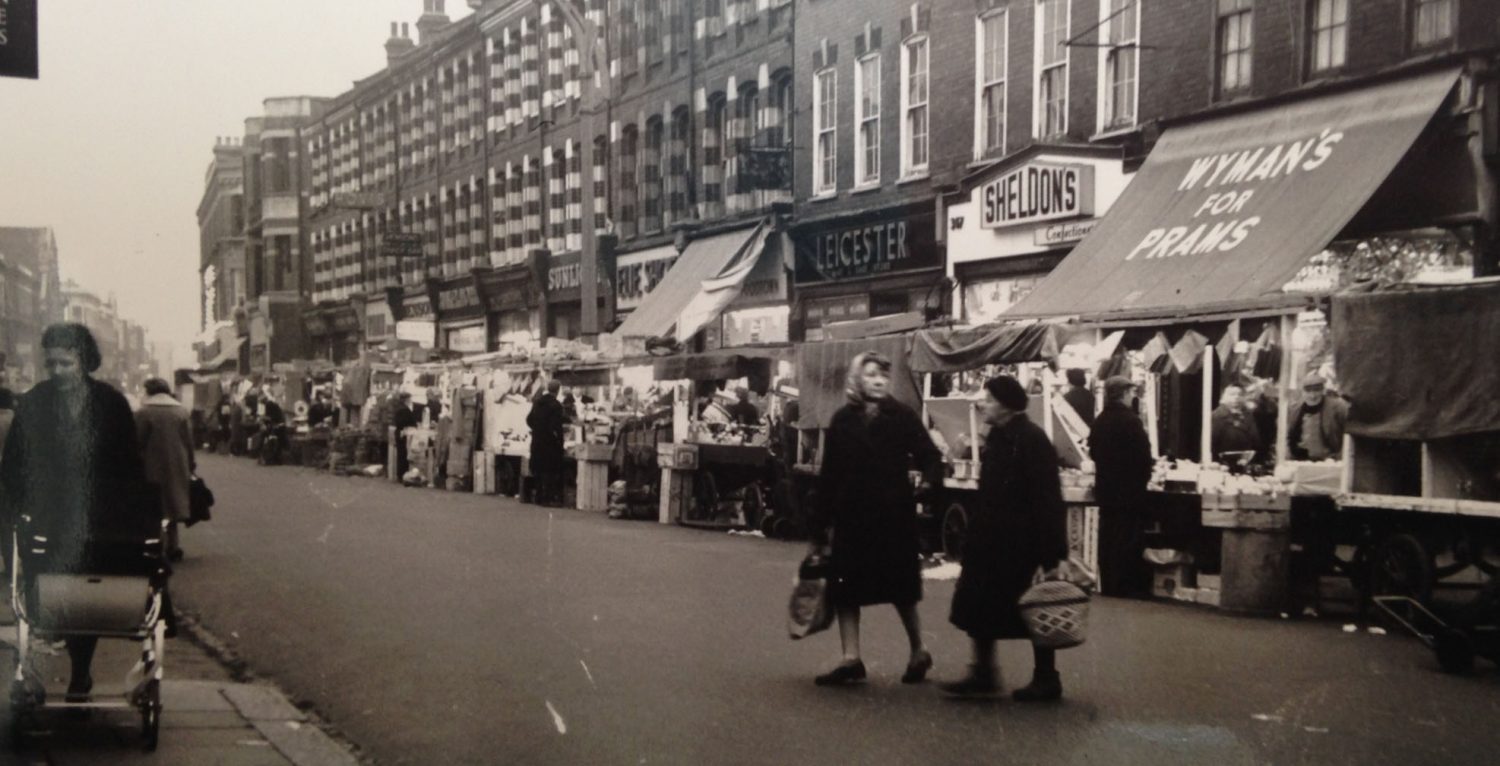Radical London
This isn't the first time the Conservatives have failed to address an acute housing crisis. David Mathieson on radicalism in 1950s London and the parallels with today
At dawn on the 21 September 1960 bailiffs crashed through the roofs of two council flats in the St Pancras district of central London. After hours of fighting they finally evicted the tenants but what followed was some of the most serious rioting ever seen in the capital. All Metropolitan police leave was cancelled and officers drafted in to control the disturbances. MPs leapt to their feet demanding an urgent debate in parliament. A horrified home secretary invoked the Public Order Act of 1936 – originally passed to clear Oswald Mosley’s fascist Blackshirts off the streets – which gave him draconian powers of detention and arrest. The shock was all the more palpable because the 1950s were meant to be an era of solid social and political consensus – prime minister Macmillan boasted that people had ‘never had it so good’. Today, Theresa May, also promises to promote social cohesion and ‘a country that works for everyone’. But, like Macmillan, May will discover that unless she moves decisively her dreams of greater gemeinschaft will founder on one issue in particular – housing.
The sequence of events behind the violence in St Pancras was complex but the root cause was simple enough: an acute housing crisis. Then as now, a desperate shortage of decent homes fueled deep social resentment. Across Britain, some quarter of a million homes had been destroyed in the Blitz of the second world war and many of those that remained standing were Victorian slums, fit only for demolition. Meanwhile, the population swelled with the post-war baby boom and the arrival of the first immigrants from the new Commonwealth. In the immediate aftermath of the war the Attlee government embarked on a massive public house building boom to try and alleviate the pressure. Nye Bevan – minister for health and housing – cajoled the cash strapped Treasury into providing cheap credit for local authorities. Labour councils then used the finance to build social housing on an unprecedented scale. Buildings gutted by the Blitz and slums alike were torn down and new, affordable homes put up.
But in 1951 Labour lost office. The party descended into senseless, fratricidal in-fighting between left and right which lasted for more than a decade. As a consequence, it was powerless to oppose what happened next. The incoming Conservatives insisted – as they had done before the war – that free market forces could solve the housing crisis. Attlee’s grants to local councils for slum clearance and new building were slashed as the Tories set about creating a nation of owner occupiers living in suburbs. When the City of London boomed as a financial centre in the 1950s, the construction and renting of office space became far more profitable than building homes. In the cities, especially the capital, commercial property speculation unleashed a surge in land prices. Massive office blocks made huge fortunes for developers. Residential districts were turned over to office use as social policy was surrendered to the dictates of market forces. Many traditional communities buckled under the strain and never recovered.
Market dogma was then applied to the private rented sector. The 1957 Rent Act swept away protected tenancies and controlled rents for millions of households living in privately rented homes. The results were as ugly as they were predictable. Long-time tenants saw their rents double or triple overnight and if they could not pay they were forced from their homes – one Labour leader later commented that the Act ‘probably caused more misery to ordinary working people than any other piece of Conservative legislation in the 1950s.’ The full horror caused by the Rent Act was eventually exposed by the Rachman scandal of 1963. The foundations of slum landlord Peter Rachman’s property empire were in streets around Paddington. Using the Act to force out protected tenants he is possibly the only landlord who has given his name to a new word: Rachmanism is described by the Collins English Dictionary as ‘the extortion or exploitation by a landlord of… slum property… especially when involving intimidation to drive out sitting tenants’. Like other property moguls then and now, Rachman made aggressive use of loopholes in company legislation to avoid penalties and tax. He established such a bewildering array of interlocking companies with nominee owners (ie frontmen) that it became almost impossible to work out who owned what. Profits in his empire simply vanished and so tax liability was whittled down to a bare minimum as layers of intermediate companies were paid for fictitious services. (The use of interlocking companies to avoid tax was a scam going on all over the country and one that set alarm bells ringing in the Treasury: between 1955 and 1960 the number of registered companies doubled without, of course, any matching increase in productive output.)
In St Pancras, not far from Paddington, housing was also the most important issue for local people. The borough had been badly bombed during war – the three mainline stations of Euston, St Pancras and King’s Cross were a magnet for the Lüftwaffe. Many of the buildings left standing were dreadful slums. When Labour took control of St Pancras council after the war it set about changing district with relish. Using cheap loans and revenue from local business rates (taxes) it began to transform the area. By the mid-50s St Pancras was a house building pioneer and was constructing more new homes than almost any other council in the country. But as Tory policies began to bite, Labour St Pancras became increasingly isolated. Building subsidies from central government dwindled. The land on which St Pancras wanted to build became increasingly expensive. Nevertheless, Labour councilors dug-in and refused to trim the building programme or raise the rents of existing council tenants to help pay for it. In 1958 central government inspectors intervened: councilors were threatened with fines and disqualification from office unless they voted to change the housing policy. The Labour group split and, amid expulsions and turmoil, Labour lost control of St Pancras council in 1959 – the same year that the Tories won their third general election in a row.
The new Tory administration slashed the building programme and introduced a new scheme to hike up council rents by up to 300 per cent for some tenants. Over the following months the borough was the scene of increasingly noisy street protests and rent strikes. The summer of 1960 was long and hot and in St Pancras politics were about to boil over. Two tenants had bricked themselves into their flats to avoid eviction. One, Don Cook, was a decorated war hero, trade unionist and highly effective communicator who knew how to feed the growing media interest with consummate skill. Then, after a stand-off which lasted several days, police and bailiffs moved in. What happened next caught almost everyone by surprise. Resistance to the evictions was expected but the intensity and duration of the protest was not. Disturbances went on for two days and when thousands of angry protestors – men and women – converged on the town hall the day they were charged by mounted police. All that happened may never be known: all my Freedom of Information requests for files have been turned down on grounds of national security. We do know, however, that the home secretary moved in to invoke the Public Order Act which effectively imposed a curfew on the borough.
The rioting in St Pancras was quelled in the short term by security measures but the long term solutions had to be political. And they came from Labour. Finally, under Harold Wilson, the party recovered its sense of purpose and power and set about using the state to correct the market failure. In 1964 Wilson became the first Labour Prime Minister for 13 years and his government (too often derided now) set about building new homes on an extraordinary scale – some 2 million between 1964-70. And a decade after it was passed, Wilson could bring audiences to their feet by reminding them that it was their Labour government which abolished the hated Rent Act and once again gave private sector tenants legal protection against unscrupulous landlords.
The St Pancras riots were part of that protest against the idea that land is just another tradeable commodity and the ideological insistence that markets alone will provide decent housing for all. The full story provides a fascinating glimpse at post-war Britain and the parallels with today are obvious. Inner city house prices are now at levels impossible for many professionals, let alone working people on average wages. Generation Rent is destined to live like urban nomads moving from one shorthold tenancy to another. The challenge for Jeremy Corbyn now is to provide the dynamic energy and leadership which Wilson gave Labour to make it electable. The challenge for his government will be to push through the radical changes which Britain so desperately needs to make.
David Mathieson’s book Radical London in the 1950s, is published by Amberley Books.

